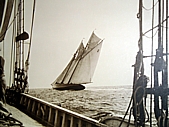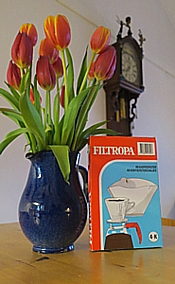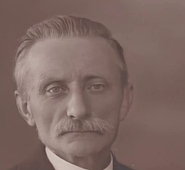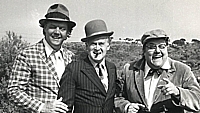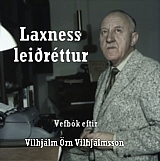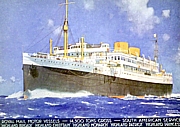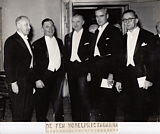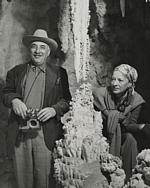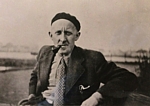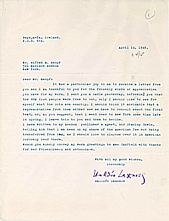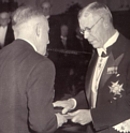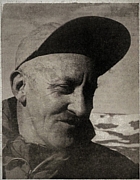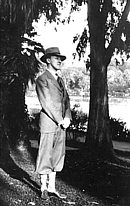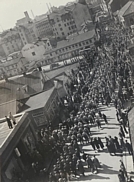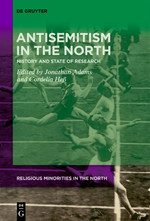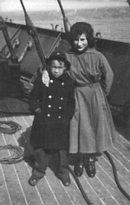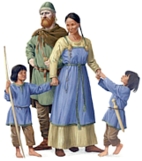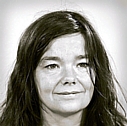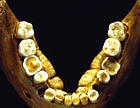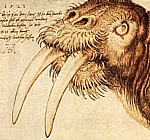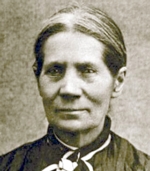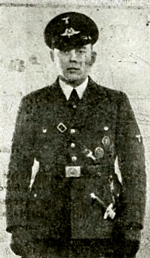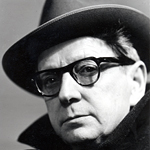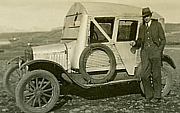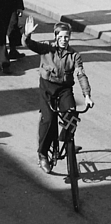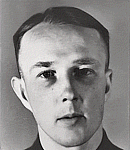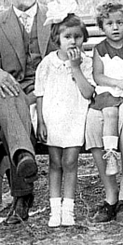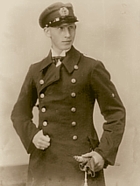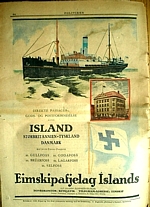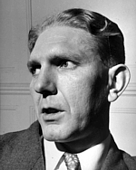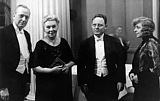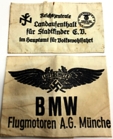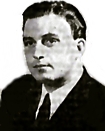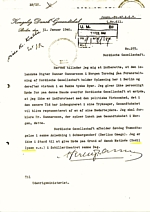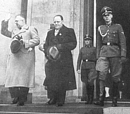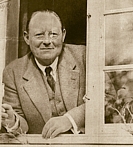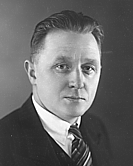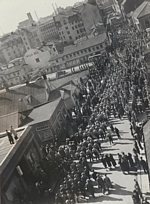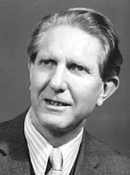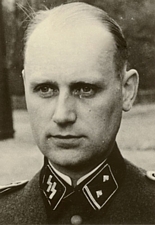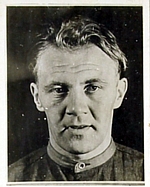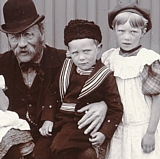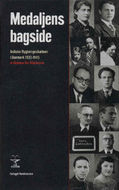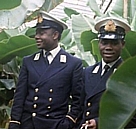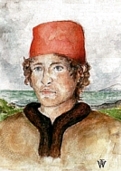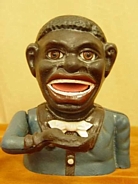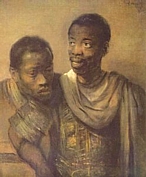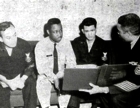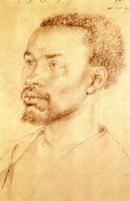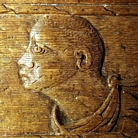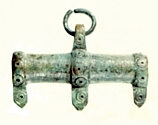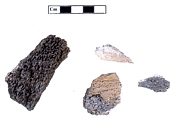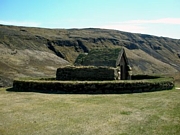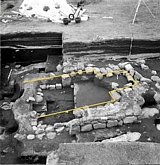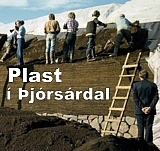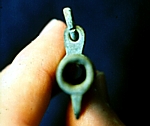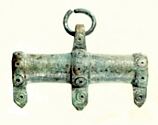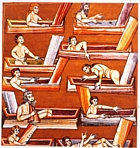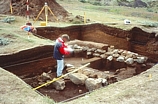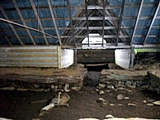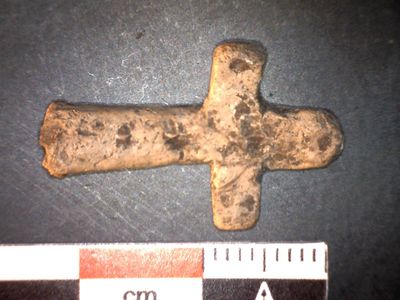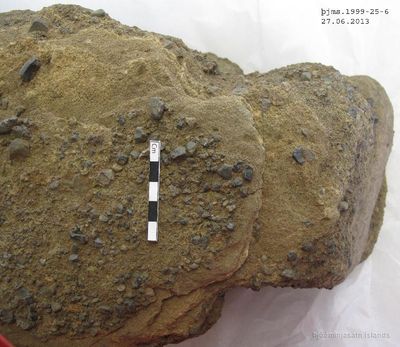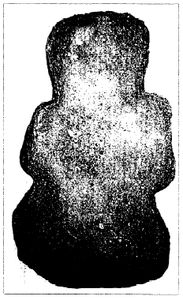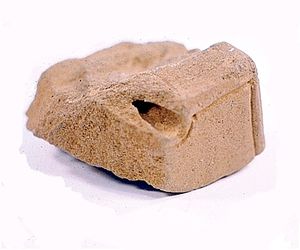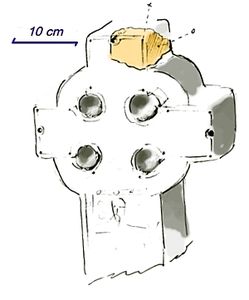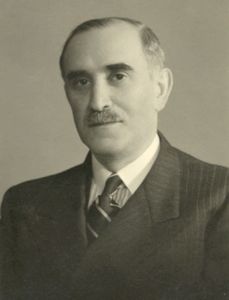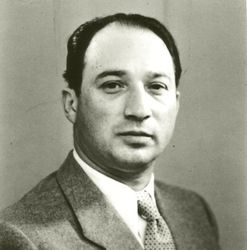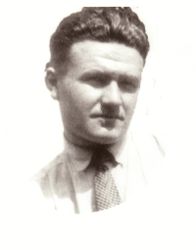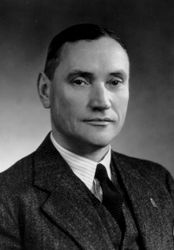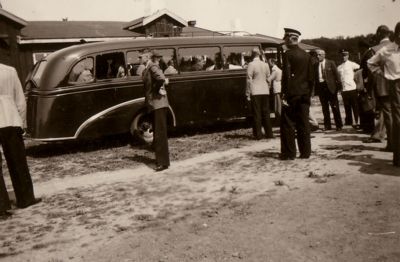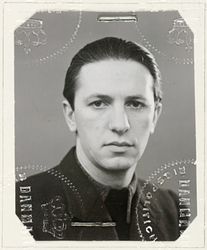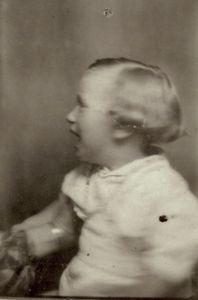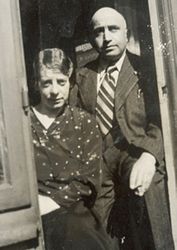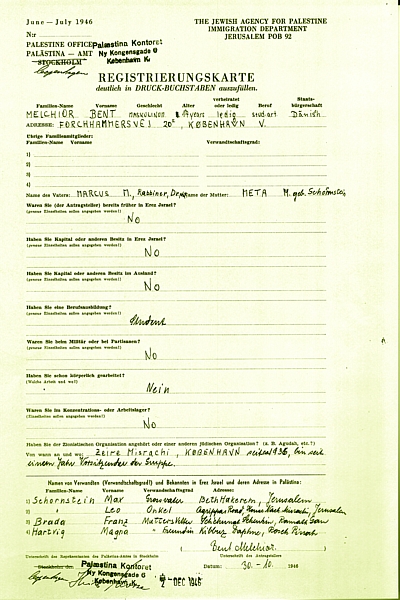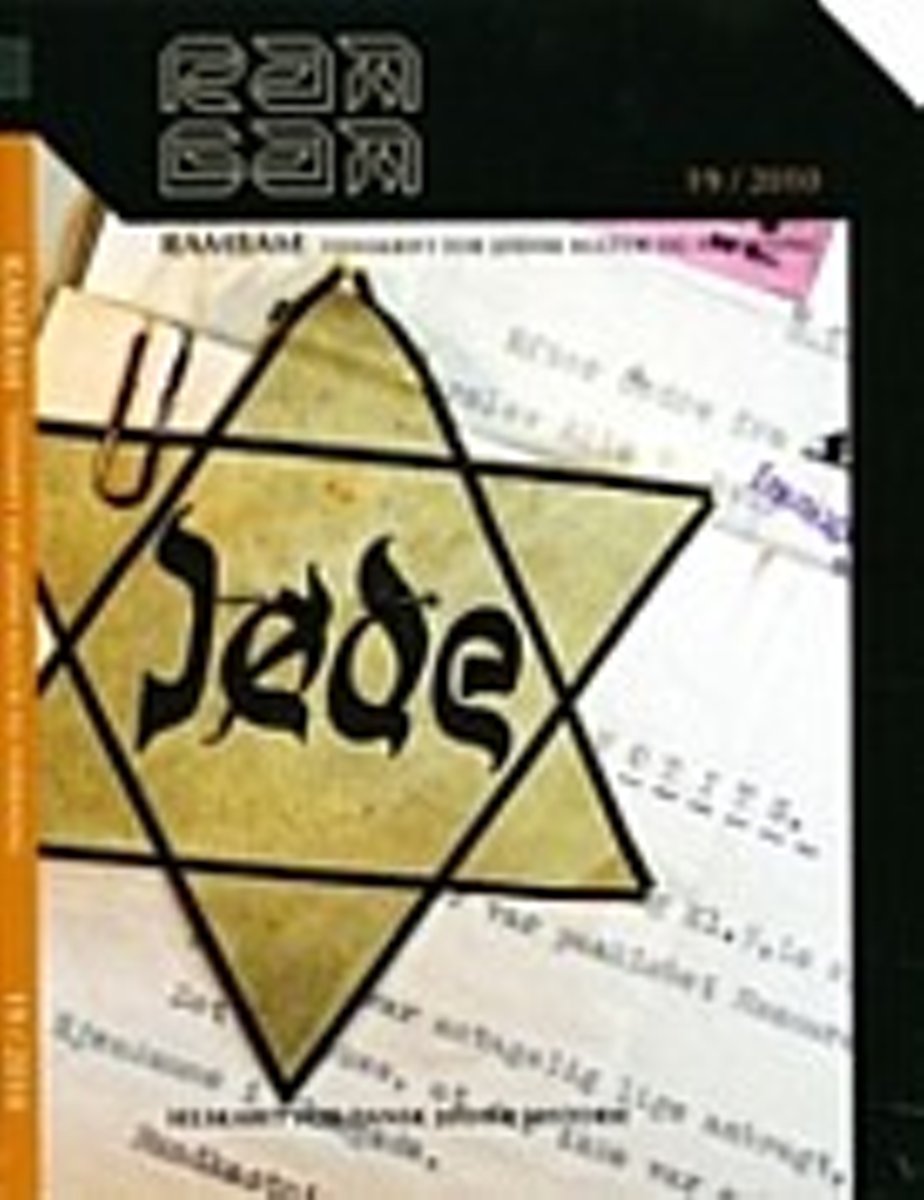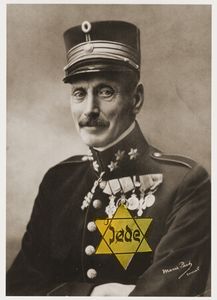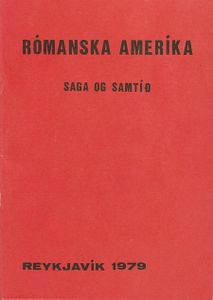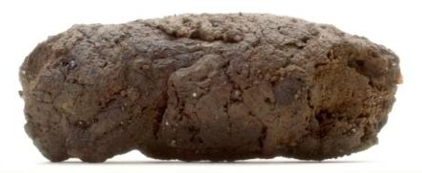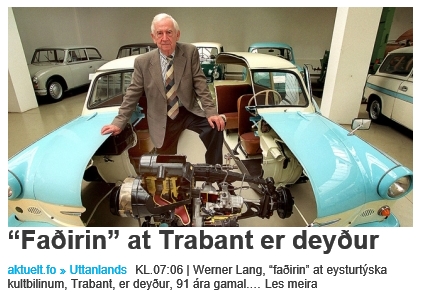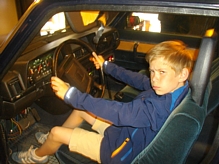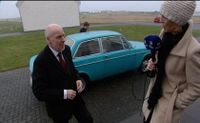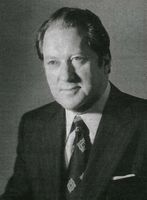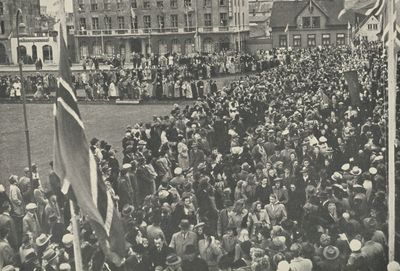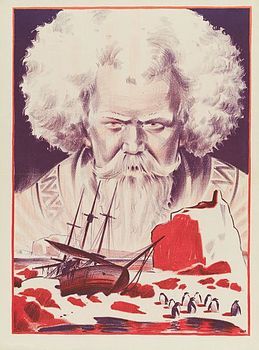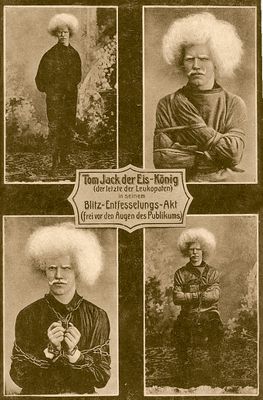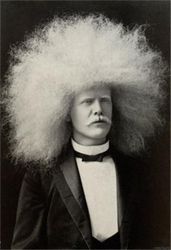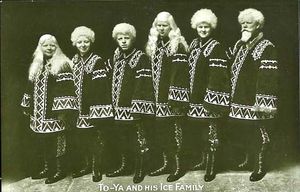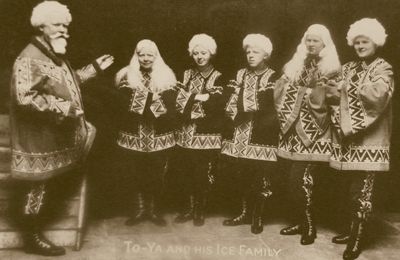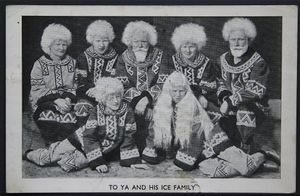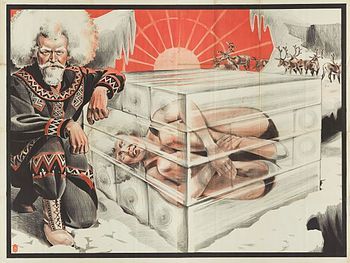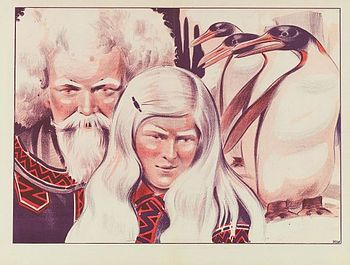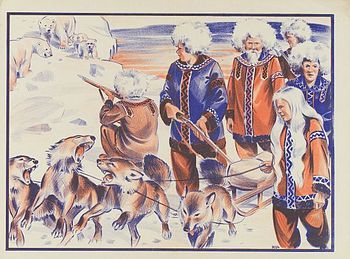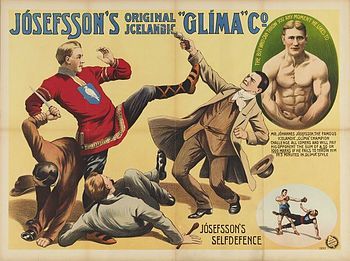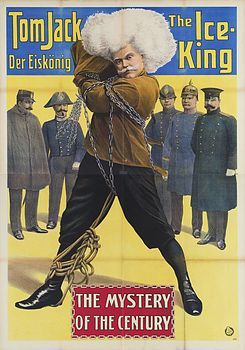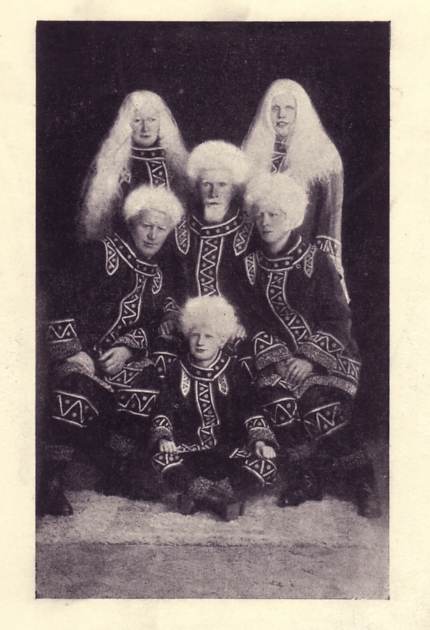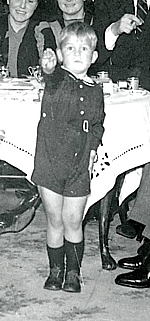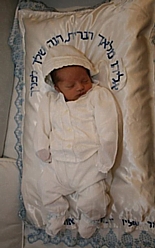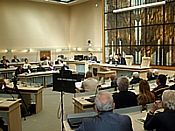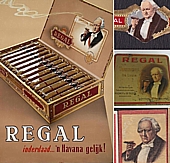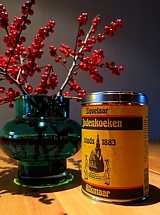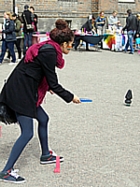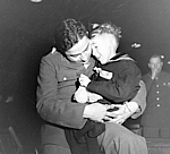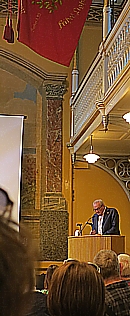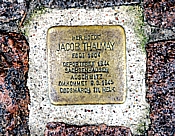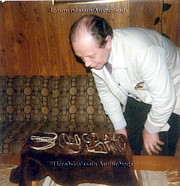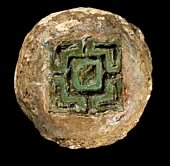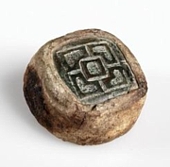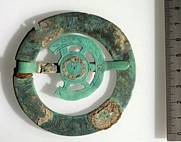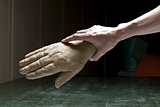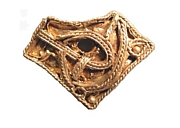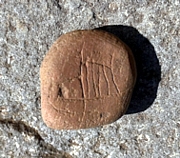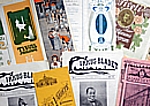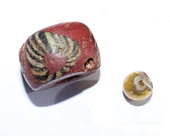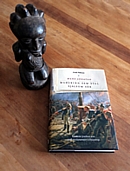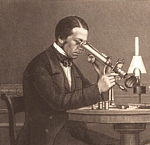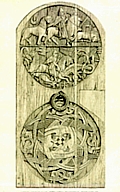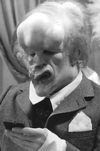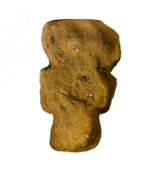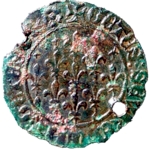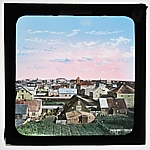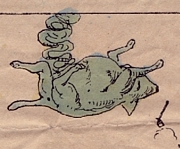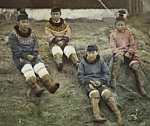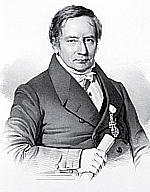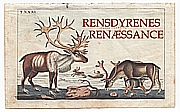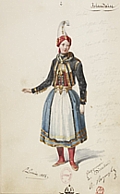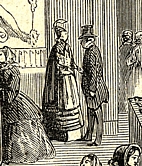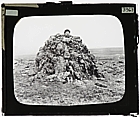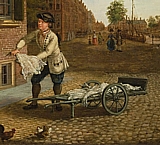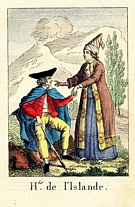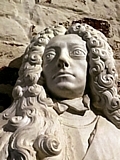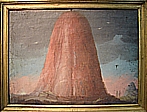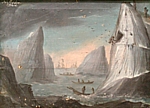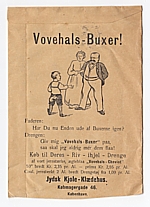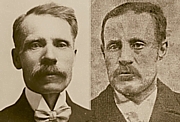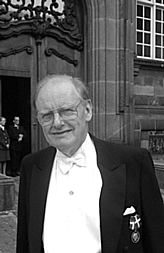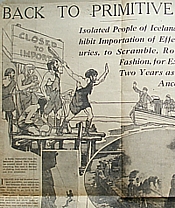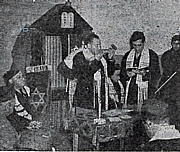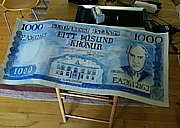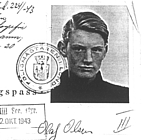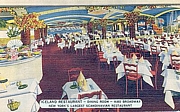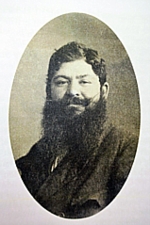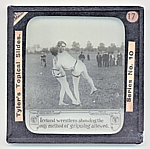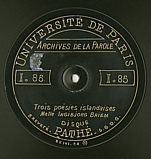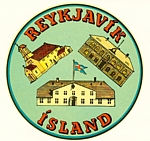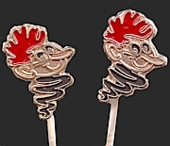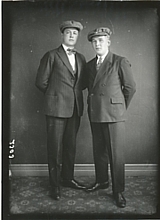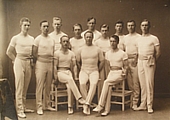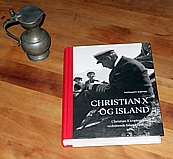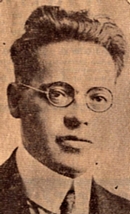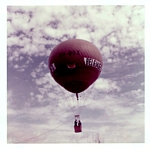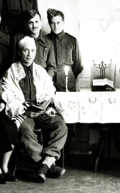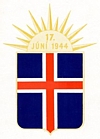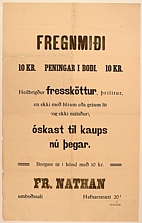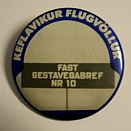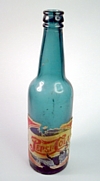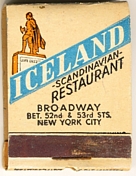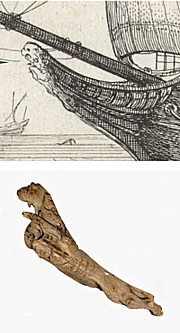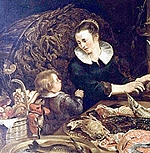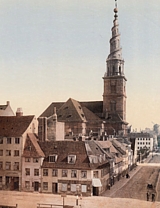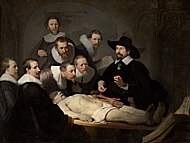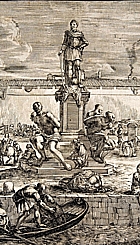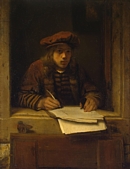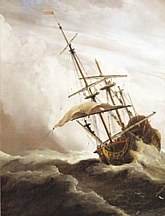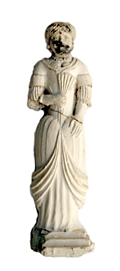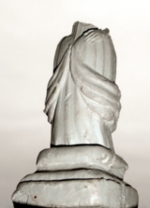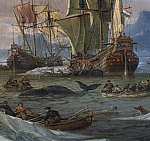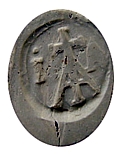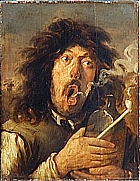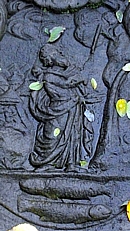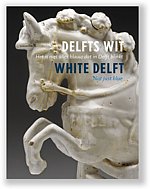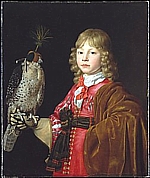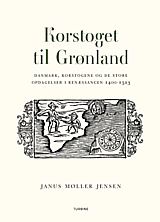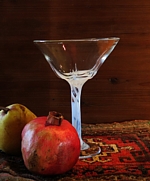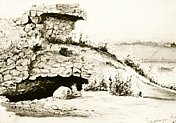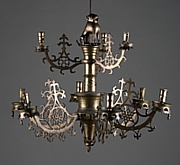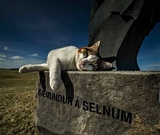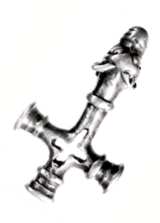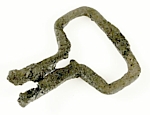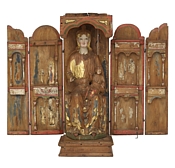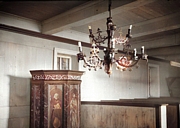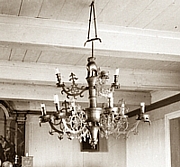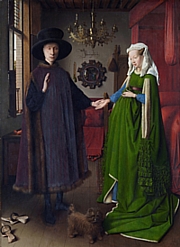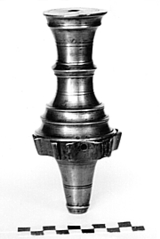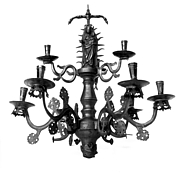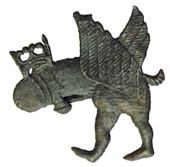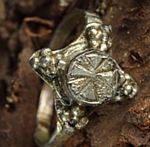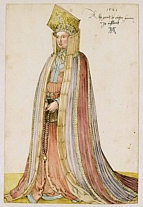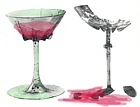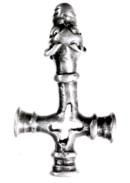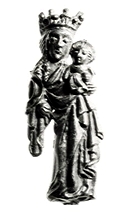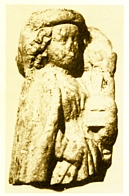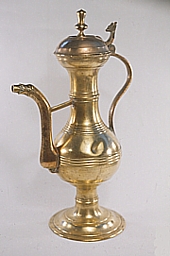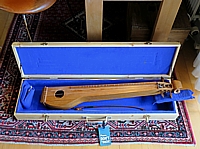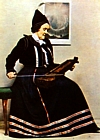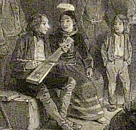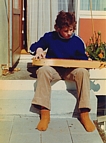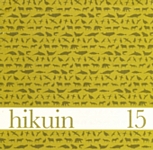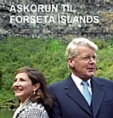Fćrsluflokkur: Menning og listir
8. getraun Fornleifs
28.8.2013 | 12:07
Nú verđur aftur brugđiđ á leik og spurt um forna hluti og gulnađa.
Vissuđ ţiđ ađ getraunir setja í sumu fólki í gang sams konar ferli og hjá spilafíklum? Sel ţetta ekki dýrara en ég keypti. Ţess vegna er ég ekki međ neinn vinning í ţessari getraun, nema heiđurinn. Hann er ávallt sćtur og eldist aldrei. Ég ćtla ekki ađ leiđa lesendur bloggsins út í neinar ógöngur.
Ykkur veikgeđja getraunafólki er hér međ sýndur lítill bútur af málverki. Spurningarnar eru:
1) Á hverju heldur höndin á myndinni?
2) Hverjum tilheyrir höndin?
3) Á hvađa tíma var eigandi handarinnar uppi?
Menning og listir | Breytt 2.6.2020 kl. 08:20 | Slóđ | Facebook | Athugasemdir (7)
Merkir fundir í Surtshelli
23.8.2013 | 11:53
Kevin Smith, bandarískur fornleifafrćđingur, sem einu sinni lenti í afar ógeđfelldri ófrćgingarherferđ vegna áhuga síns á Íslandi, er sem betur fer enn ađ vinna viđ fornleifarannsóknir á landi okkar. Herferđ ţeirri, sem ég skýri betur frá síđar, var stýrt af Thomas H. McGovern prófessor í New York sem skrifađi bréf út um allar jarđir til ađ koma í veg fyrir ađ Smith grćfi á Íslandi og til ađ gera lítiđ úr menntun og getu Smiths sem frćđimanns. Kevin Smith varđ ţví um tíma eins og útilegumađur međal allra ţeirra útlendinga sem stundađ hafa fornleifafrćđi á Íslandi.
Ţví er gott ađ sjá ađ Kevin, sem ég hef kynnst lítillega, er á réttum stađ, í Surtshelli, sem er örugglega stađur ţar sem útlagar og útilegufólk hafa aliđ manninn. Í sumar hefur Kevin Smith ásamt fríđu fylgdarliđi gamalla karla fundiđ nokkra merka grip í mjög ţunnu gólflagi í hellinum, m.a. krosslaga hlut.
Velta menn ţví nú mjög fyrir sér á kjaftaklöpp verkefnisins hver kyns sé. Í fjölmiđlum hefur Guđmundur Ólafsson starfsmađur Ţjóđminjasafnsins velt vöngum yfir ţví, hvort útilegumenn eđa hellisbúar hafi veriđ kristnir eđa ekki. Ég býst nú viđ ţví ađ Guđmundur sé ţar ađ velta ţví fyrir sér, hvort "dótiđ", sem hann svo gjarnan kallar fornminjar, sé frá ţví eftir ađ Kristni var lögleidd á Íslandi eđa fyrir ţann tíma, ţ.e.a .s. fyrir 1000, eđa ţar um bil.
Ég leyfi mér ađ hafa skođun á ţessu. Krossinn sem fundist hefur í hellinum er ađ mínu mati met (lóđ) úr blýi til ađ setja á reislu (vog). Slíkir blýkrossar hafa fundist í leifum eftir norrćna menn á Bretlandseyjum og ađ sjálfsögđu í Skandinavíu.
Kross úr blýi međ innlagđri koparţynnu, sem er úr blýi, hefur t.d. fundist í heiđnu kumli í Vatnsdal í Patreksfirđi sem ég hef skrifađ um (sjá hér).
Krossinn í Surtshelli og hinir gripirnir, sem líklega eru líka lóđ frá "víkingaöld". AMS-geislakolsgreiningar sem gerđar hafa veriđ á dýrabeinum úr hellinum sýna dvöl manna í hellinum um 900 e.Kr. Varast ber ţó ađ taka AMS-aldursgreiningar bókstaflega, ţar sem AMS-aldursgreiningar og hefđbundnar C-14 geislakolsaldurgreiningar gerđar á sömu fornleifunum (sýnunum) geta oft gefiđ mjög mismunandi niđurstöđur, ţótt ađ sýnin séu úr sama trénu, dýrabeininu eđa mannabeini (Sjá hér).
Mér ţykir ţó líklegt ađ ţeir gripir sem fundist hafa í hellinum séu frá 10. öld og ađ ţarna hafi Ţorvaldur Ţórđarson Holbarki, bróđir formóđur minnar Herdísar Ţórđardóttur (ţau vöru tvö nítján barna Friđgerđar sem var barnabarn Kjarvals Írakonungs og Höfđa-Ţórđar Bjarnasonar og líklega tvíburar), týnt metum sínum. Ţorvaldur fćddist samkvćmt mér langtum fróđari mönnum áriđ 915, eđa eins og segir í Landnámu (Sturlubók):
Ţorvaldur holbarki var hinn fjórđi [son]; hann kom um haust eitt á Ţorvarđsstađi til Smiđkels og dvaldist ţar um hríđ. Ţá fór hann upp til hellisins Surts og fćrđi ţar drápu ţá, er hann hafđi ort um jötuninn í hellinum. Síđan fékk hann dóttur Smiđkels, og ţeirra dóttir var Jórunn, móđir Ţorbrands í Skarfsnesi.
Fornleifafrćđingarnir í Surtshelli kalla Ţorvald af ókunnum ástćđum Ţorkel og segja hann líka "hólbarka". En segjum nú (í gamni) ađ ţetta séu met Ţorvaldar ćttingja míns. Ţá hefur hann veriđ ţarna um 935-40, á bestu árum sínum í sönglistinni og drápuflutningi, enda annálađur hálfírskur tenór. Hvađan haldiđ ţiđ ađ söngást Skagfirđinga sé annars ćttuđ?
Ţetta er spennandi rannsókn hjá Kevin og Co., en ţekking manna á ţví menningarlega umhverfi sem ţeir eru ađ rannsaka mćtti oft vera ađeins meiri en raun ber vitni.
Menning og listir | Breytt 29.8.2013 kl. 23:03 | Slóđ | Facebook | Athugasemdir (5)
Ţýski krossinn
14.8.2013 | 07:07
Hvernig getur ólögulegur, íslenskur móbergshnullungur orđiđ ađ helgum krossi? Fyrst ađ krossi úr "engilsaxneskri kristni", og nú síđast ađ krossi frá" Hamborg eđa Bremen"?
Í skrám Ţjóđminjasafnsins er hćgt ađ lesa ţetta um stein sem fannst á Ţórarinsstöđum í Seyđisfirđi: Steinkross úr móbergi. Veđrađur. Upphaflega jafnarma og óreglulegur ađ lögun. Lögun bendir til uppruna úr engilsaxneskri kristni.
Skođar mađur svo greinargerđ um uppgröft á Ţórarinsstöđum frá 1998, ţegar "krossinn" fannst, er ţessu slengt fram:
"Steinkrossinn sem fannst viđ uppgröftinn er trúlega elsti tilhöggni krossinn sem fundist hefur hingađ hér á landi. Hann er höggvinn í móberg og er um 45 cm hár. Krossinn hefur stađi norđan viđ nyrđri langvegg stafkirkjunnar, á undirstöđu úr torfi og grjóti. Hann er jafnarma og nokkuđ óreglulegur í lögun eins og títt hefur veriđ međ krossa sem eru tímasettir til mótunarára kristninnar í Norđur-Evrópu."
Hér vitnar höfundur skýrslunnar ekki í neitt, en hnykkir ţess í stađ út einhverju rugli fra hoften eins og Danir segja. Engin röksemdafćrsla var fyrir ţví ađ ţetta vćri kross međ engilsaxnesku lagi. Engin sönnun liggur fyrir ţví ađ ţetta sé yfirleitt kross og ađ hann sé ţar ađ auki frá Brimum eđa Hamborg.
Hvernig veit Steinunn Kritjánsdóttir ađ ţetta hafi veriđ "jafnarma" kross? Ţessu ber henni ađ svara og sanna, áđur en áfram verđur haldiđ međ endalaust rugl og óra.
Móbergs"krossinn" frá Ţórarinsstöđum í lit og ţegar hann fannst áriđ 1998.
En nú hefur Steinunn Kristjánsdóttir sent ţennan hnullung, sem hún fann á Ţórarinsstöđum í Seyđisfirđi, á sýningu í Paderborn í Westfalen (sjá hér og hér). Sýningin er um Kristni og ber heitiđ CREDO. Samkvćmt fréttum lćtur dr. Steinunn nú fylgja ţá sögu međ móbergssteininum, ađ hann sé frá Hamburg-Bremen. Ef menn suđur í Paderborn trúa ţví, ţá ćtti frekar ađ kalla sýninguna CREDULUS (auđtrúa).
Ekki nóg međ ađ ţetta órökstudda rugl fćr ađ fjúka í skýrslum og doktorsritgerđ Steinunnar frá Gautaborg. Steinunn vitnar í einni rannsóknarskýrslu sinni í fund brots af tilhöggnum steini sem hugsanlega er af krossi eđa grafsteini, og sem fannst viđ rannsóknir mínar ađ Stöng í Ţjórsárdal. Fundur sá er ekki eldri en frá 11. öld. Á ţeim steini sést ađ hann hefur veriđ höggvinn vandlega til og lagađur af einhverjum sem kunni til verka. Steinunn vitnar í grein eftir mig, ţar sem hvergi er sagt ađ brotiđ sé frekar úr krossi eđa grafsteini. Hvergi skrifa ég, ađ brotiđ sé frá síđari hluta 10. aldar eins og Steinunn heldur fram. Hvernig leyfir Steinunn Kristjánsdóttir sér ađ líkja hrođahnullungi sínum, án nokkurra sannanna fyrir ţví ađ hann hafi veriđ mótađur af manna höndum, viđ vandlega tilhöggvinn stein fundinn á Stöng í Ţjórsárdal? Ţađ eru afar óvönduđ vinnubrögđ. Vonandi kennir hún ekki öllu ţví fólki sem lćrir fornleifafrćđi í HÍ slíka ađferđafrćđi.
Ólögulega, veđrađa smákrossa, sem erfitt eđa ógjörlegt er ađ aldursgreina, er ađ finna víđa um Evrópu. Enginn ţeirra er úr móbergi. En "krossinn" frá Ţórarinsstöđum hefur ekki stađiđ og veđrast gegnum tíđina eins og ţeir krossar. Hann er jarđfundinn. Ţetta er mjög mjúkur íslenskur móbergssteinn, sem mylst úr viđ minnsta átak. Ég leyfir mér ađ efa ađ ţetta sé yfirleitt kross. Á honum er ekkert mannaverk ađ sjá.
Menn hafa áđur ţóst finna mjög forna krossa á Íslandi, jafnvel úr harđari efni en móbergi, og er ţessi saga kannski ágćt til ađ minna á ţađ.
Hvernig er ţá hćgt ađ fara međ ólögulegan móbergsstein til Paderborn og láta fólk trúa ţví ađ hann sé kross? Jú, ef ímyndunarafliđ er sterkt og sjálfblekkingin mikil er greinilega hćgt ađ segja allt á Íslandi og jafnvel líka í Ţýskalandi (muniđ ţiđ Icesave?). Ţannig innistćđulaus fornleifafrćđi er greinilega kennd í Háskóla Íslands.
Ţađ sem Steinunn hefur ekki fundiđ á Skriđuklaustri: Grćnlenskar konur, Fílamađur, lásbogaör. Allt er hjóm og vitleysa og úr lausu lofti gripiđ. Annađ, augljóst efni rćđur hún heldur ekki viđ (sjá hér). Sama er tilfelliđ međ hnullunginn viđ "stafkirkjuna" á Ţórarinsstöđum. sem fannst á torfi, ţar sem ekki var torfkirkja?? Ég er reyndar ekki viss um ađ Steinunn hafi fundiđ undirstöđur stafkirkju á Ţórarinsstöđum. Rústir voru ţarna mjög raskađar og ég tel ađ torf hafi upphaflega veriđ utan um eđa í tengslum viđ steinhleđslu ţá sem túlkuđ er sem undirstađa undir stafkirkju.
Mađur verđur ađ spyrja. Hvenćr hćttir ţessi ćvintýrafornleifafrćđi Steinunnar Kristjánsdóttur? Ţorir enginn ađ andmćla ruglinu? Verđur ekki ađ hafa samband viđ einhvern í Paderborn og ađvara ţá sem nú tilbiđja ţar móbergshnullung frá Íslandi, vegna ţess ađ íslenskur fornleifafrćđingur hefur fengiđ ţá flugu í hausinn ađ ţetta sé ţýskur kross - úr ţessu fína Seyđisfjarđarmóbergi? Er enginn endi á vitleysunni?
Ach mein Lieber, ţetta er ađ mati Fornleifs ekki ţýskur kross sem ţeir suđur í Paderborn hafa fengiđ frá Íslandi, heldur óáfallinn ćvintýrakross úr silfri úr Austfjarđarţokunni eđa kannski bara illa farinn hundasteinn sem hundar hafa veriđ tjóđrađi viđ svo ţćr kćmust ekki inn í guđs hús og migu á altariđ. Mér hefur enn ekki tekist ađ finna mynd af steininum in situ (á fundarstađ) eđa á teikningum, en hann mun hafa stađiđ "norđan viđ nyrđri langvegg stafkirkjunnar."
Lesiđ ţessa grein um hringlaga kirkjugarđa og óundirbyggđa kenningu Steinunnar og annarra um ađ torfkirkjur séu arfleifđ frá Bretlandseyjum međan ađ stafkirkjur séu skandínavísk uppfinning.
Menning og listir | Breytt 27.1.2021 kl. 12:22 | Slóđ | Facebook | Athugasemdir (2)
Danish Holocaust Distortion
11.8.2013 | 13:54
Danish historian Bo Lidegaard is busy advertising his new book, which will be published in no less than five languages in the fall.
The monologue of Bo Lidegaard on this YouTube video is a sales promotion for the strange historical perception adapted by some Danish historians in later years, who among other things believe that Nazi Collaboration of the Danish authorities was the main reason for the rescue of most of the Danish Jews to Sweden in 1943. This argument is usually rather lacking in reasonable documentation.
I have written this response to Bo Lidegaard:
The Jews who were deported from
Denmark 1940-43
A consequense of the WWII Collaboration Policy in Denmark
A comment by Vilhjálmur Örn Vilhjálmsson, Ph.D.
As a reader of most of Bo Lidegaard´s books during the past 10 years, wherein he has used every opportunity to praise the collaboration policy (Samarbejdspolitikken) in Denmark during WWII, I have never seen any mention of the Jewish refugees, among them children, whom the Danish authorities expelled to Nazi-Germany from 1940 to 1943.
The crimes against Jews and other stateless individuals, were among the "highlights" of the Danish collaboration policy, which Lidegaard on the contrary argues rescued Danish Jews in 1943. He is quite wrong. The Danish authorities were from 1940-43, the heydays of the collaboration, in most cases far more eager to get rid of Jews to Germany than the Nazi-autorities were to receive them. Anti-Semitism was not any less the order of the day in Denmark than it was elsewhere in Europe.
In 2005, the results of my many years of research into the fate of stateless Jews in Denmark were published. When my book, Medaljens Bagside (The Other Side of the Coin), was released, the Danish Prime minister Anders Fogh Rasmussen, presently the General Director of NATO, presented an apology to the few surviving relatives of the expelled Jews from Denmark, most of whom were killed in camps in Germany and Poland.
Ernst Platzko, a businessman from London/Vienna, was expelled from Denmark in 1940 and killed in Sachsenhausen in 1942.
Fogh Rasmussen also presented a general apology to the Jewish People for the crimes of Nazi-collaborating Danish officials during WWII. However, in 2004 and 2005 Bo Lidegaard and like-minded scholars were busy bashing Fogh Rasmussen for his public critical stand on the collaboration of Danish Politicians and Political Parities with the Nazis during WW II.
Danish food exports, another "highlight" of the collaboration during WWII, helped feed the Wehrmacht on the frontlines and those who engaged in the killing the Jews of Europe. The Danish Collaboration did in fact not rescue any Danish Jews. If anything, it aided the killing of Jews in Europe.
Carol Janeway, of the Alfred E. Knopf Publishers, the publishing house which holds the rights to Dr. Lidegaard´s book outside Denmark, has in the Danish daily Politiken (which Bo Lidegaard is the editor in Chief of) stated that:
"She believes that if one in France and the Netherlands had manoeuvred oneself half as well through the war as did the Danes, WW II had not been quite so bleak"
(http://politiken.dk/kultur/ECE1959244/historie-om-danske-joeder-gaar-verden-rundt/).
This actually sounds like the well known mantra of a loud-shouting group of Danish historians, who want to make the world believe that Danish political collaboration with the Nazis was something that all Danes wanted, and that the collaborating politicians were heroes who rescued Jews. We must bear in mind that Carol Janeway also promoted another revision of history: The memoirs of the Swiss citizen Bruno Grosjean, who hoaxed his childhood memories and created an alter ego, Binjamin Wilkomirski, to fool the world into believing he was a child survivor of the Vilno Ghetto and Auschwitz. Her judgement on European WWII history is far from sound. The children in the ghetto in Vilno were killed with calories from Danish bacon and with collaboration of Lithuanians who were eager to help annihilating their fellow citizens if they were Jews.
A: Szymon Zajtmann, a Polish born merchant from Hamburg, expelled from Denmark in 1941. Killed by gassing in Bernburg euthanasia asylum in Bernburg. B: Dr. Stefan Glücksman, a historian from Warsaw, was expelled from Denmark in 1941 and killed in the SS-camp of Gross-Rosen.
Now, according to Lidegaard and his American publishers, we are supposed to believe that the Danes, as the only nation in Europe, found some kind of a special cure, a unique response to the Holocaust, by collaborating and being nice to the Nazi occupants.
This new whitewashing of Danish Nazi collaboration can easily be viewed in parallel to the trend we are witnessing in other parts of Europe. In the Baltic states, praising of the local politicians and perpetrators, who collaborated with the Nazis, is seen as a virtue because the murderers of Jews also represent the fight against Communism and the Soviet oppression. In the Baltic, where anti-Semitism is persistent, the distortion of history equalizes the Holocaust with the Soviet terror and the fate of Estonians, Latvians and Lithuanians under Soviet Rule.
The Danes were lucky compared to the Baltic States. There was only one invader and one occupant, and according to Lidegaard the ultimate luck was that resistance was limited and collaboration was great. However, Lidegaard forgets in his self righteous monologue, to tell us that Danish Nazi collaboration and exports helped the killing machine of the Third Reich to prolong the murder of millions of people in Europe. And Carol Janeway seems unable to see that if other and more important countries under siege had behaved like Denmark, the outcome might very well have been a permanent Third Reich in reality.
A Danish State Prosecutor and perpetrator, Harald Petersen, Minister of Defence after WWII, was one of many leading officials who was engaged in the collaboration policy of expelling stateless Jews from Denmark 1940-43. After the war nearly all of the white collar criminals, anti-Semites and xenophobes of the The Ministry of Justice, the State Police and Ministry of Foreign Affairs, who engaged in the expulsion of Jews and other stateless persons from Denmark during WWII achieved fine careers, up to the highest offices of the state. No one asked questions about their crimes, which the modern authorities tried to hide as late as 2001.
German Political refugees being deported to Germany by the Danish authorities and Danish Police in 1941. Many of these men, who were imprisoned in the Danish Horserřd internment camp north of Copenhagen lost their lives in concentration camps. Jewish prisoners in Horserřd in 1941 were spared deportation and hard Danish effort to get rid of them, only because the German authorities did not wish to receive them.
Danish Police officials frolicking with German Gestapo officers at a Copenhagen hotel.
A Danish policeman (in the middle) of the Immigration Police fraternising with Nazi spies in 1936. The German on the left was sentenced to death for war crimes in Norway, while the Gestapo-officer on the right, Hans Hermannsen of Flensburg, who was an officer of the Sicherheitsdienst in Denmark during the German Occupation made Danish authorities' wishes for expulsion of unwanted individuals possible. After the war he worked for the Danish Police Intelligence Service as well as for American forces in Hamburg.
Schulim and Ruth Fanni Niedrig, a young couple which the Danish authorities expelled to Germany in 1940. In 1943 Ruth Fanni was bitten to death in Auschwitz by dogs. Schulim, who was actually born in the town of Oswiecim, managed to survive in Auschwitz, being one of few survivors from Danish expulsions of Jews from Denmark 1940-43.
The envelope of a romantic love letter from Schulim to Ruth Fanni, when they were imprisoned before their deportation to Germany in July 1940. Schulim added a heart and wrote "I love you". The official censorship added all the writing in red and blue pencil: "because letters with such contents will not be delivered to his wife". Ruth Fanni never received the letter.
II
Historian Bo Lidegaard presents us with a narrative of a Jewish mother, written in past-tense (which indicates that it was written after the war), and a list of things for her children to bring with them to Sweden. But we must not forget another Jewish mother in Denmark: Brandla Wassermann.
Brandla Wassermann managed to flee from Berlin with her three young children to Copenhagen in late October 1942. She was a slave labourer in a Berlin factory called Fermeta. She and her three children were helped and accompanied to Copenhagen by a Danish citizen, who did it out of the good of his heart - one of the real Danish heroes. When in Copenhagen she was helped by other ordinary Danes, but a Danish policeman, a fervent Nazi, who received her at the Central Police Station, sent her back with the consent of higher officials and a government minister. Within a month her children, Ursula (7), Jacky Siegfried (5) and Denny (2) had been gassed in Auschwitz.
Jacky Siegfried Wasserman didn´t find his safe haven in Denmark - and didn´t make it to Sweden in 1943.
Brandla Wassermann was executed by an injection of phenol into the heart in Auschwitz on 15 December 1942. The only list which we have, instead of a list of items for her children to bring with them to Sweden, is the list by the Berlin authorities, of the few belongings in Brandla Wassermann´s appartment in Keipelstrasse 41 which were expropriated to compensate for the rent she didn't pay when she was in Copenhagen.
Thanks to the Collaboration Policy, and to Bo Lidegaard for not telling us the story of Brandla Wassermann and her three children which didn´t fit his glorification of Danish Nazi Collaboration!
Not all Danes, as Lidegaard would like you to believe, collaborated with the Nazis. Brave, ordinary Danes helped rescue Jews to Sweden, while the Danish Government collaborated and participated in the destruction of Jews.
III
The Danish daily Politiken, which Bo Lidegaard is the Editor-in-Chief of today, was publishing all through the Nazi occupation of Denmark. The daily and most of its journalists followed the safe and golden rule of Danish Nazi collaboration.
On 7 September 1941 Politiken brought a news release from Danish news agency Ritzau, which originated from the German News agency DNB (Deutsche Nachrichtenbüro), where the introduction of the legislation for the yellow star in Germany was announced. The legislation was introduced on the 1st of September 1941 and was active for certain parts in the Reich from the 19th of September 1941 - but not in occupied Denmark. Despite the irrelevance for Denmark, the Danish daily Politiken announced the introduction of the yellow star to brand Jews 10 days before the decree was active in the state of the occupants.
Moreover, the journalist at Politiken added his private view to the news release, which didn´t originate from the original decree and which certainly doesn´t harmonize with the Danish "Countryman" ideal now being promoted by Lidegaard: "From what one has learned in connection with this decree, it has been caused by certain experiences, which made it appear desirable to make the Jews easily recognizable for anyone in public".
On 30 March 1940, 10 days before the Nazis occupied Denmark, the Danish government passed a law making it criminal to hide a Jewish refugee in private homes. One of the "key player" of the collaboration with the Nazis and thus one of the people behind the rescue of the Danish Jews according to Lidegaard was the initiator for that legislation. That politician was social-democrat Hans Hedtoft-Hansen who after WW II became the Prime minister in Denmark (1947). Hedtoft-Hansen argued in the Danish parliament in 1940:
"The change in § 3 for punishments for those who help to keep foreigners hidden from the police, may sound harsh, but anyone who considers the condition that we today have in this country must recognize its necessity. Where the right of asylum for political emigrants are recognized in such an extent that is the case in Denmark, there is no occasion for real political emigrants to keep hiding and not at the Danish fellow citizens to contribute to this."
Margrét Vigdís Árnadóttir, The Icelandic mother of Thor Daniel Schlesinger received a sentence based on this legal "reform". She received a sentence of 60 days in prison, which was altered to 5 year suspended sentence. Her crime was to hide the father of her son, Fritz Schlesinger, a German Jew. Fritz Schlesinger was killed in Auschwitz in 1943 after he was expelled and deported to Germany - by the Danish authorities. Thor Daniel Schlesinger died of cancer in Iceland at the age of nine, and one of Lidegaard´s heroes, Hans Hedtoft-Hansen, became the prime minister of Denmark, now praised as one of the great Danish collaborationists who according to Lidegaard made the rescue of the Jews in Denmark possible.
IV
Bo Lidegaard´s argument that the Danish Jews were jolly good "Countrymen" and equals of the Danes is a modern myth in the making. If the Jews were perceived as Countrymen, why were Danish born Jews, who had settled and married i Germany not helped, when they and their Danish families desperately sought permission to return to their families in Denmark? In their cases one never sees the term Countryman in use. All of the Danish Jews, who in 1938-1940 couldn´t return home to their native Denmark, were all killed in the Shoah.
Bent Melchior´s application to make Aliyah in 1946. From the present author´s book Medaljens Bagside (2005).
At the same time stateless Jews, who had fled from Denmark to Sweden in 1943 were ordered by the Danish authorities to leave Denmark with a very short notice. Even a Jewish survivor who was expelled to Germany in 1942, and who made it back to Denmark in 1945, was imprisoned so he couldn´t tell his story. It wasn´t told until 2005, because the Danish authorities for many year prevented historians who researched the fates of Jewish victims in Denmark in researching all relevant aspects of WWII in Denmark. At the same time Danish neo-Nazis bogus researcher got unlimited access to archives on Danish SS-volunteers, which the neo-Nazis removed systematically in large quantities from the National Archive in Copenhagen to sell to fellow fanatics.
After WWII the relatives of Jews who had been expelled from Denmark 1940-43 received incorrect information about their relatives´ expulsions from Denmark. Some received the information that their family members, who had been killed in Germany and Poland, had of their own free will moved to Germany during the war.
That was the country in which the Jews were Countrymen. Who is Bo Lidegaard trying to fool? Why deosn´t he qoute my book Medaljens Bagside?
V
The story about the flight of the Jews from Denmark in 1943, which Dr. Lidegaard is publishing in the USA, Germany, Norway, Sweden and the Netherlands is different in details from the story he has published in the Danish version of his book. In the first section of the Danish version of his book, Countrymen (Landsmćnd), Lidegaard presents misinformation about the expulsions of stateless Jewish refugees from Denmark from 1940 to 1943. Lidegaard writes, and refers incorrectly to my book Medaljens Bagside [The other side of the coin] that the Germans demanded those expulsion. That is entirely wrong.
After this statement in the Danish volume of Countrymen, one can read footnote 12, where Lidegaard starts by referring to a WWII "When, What and Who" that was published in 2002, which provides absolutely no information on the expulsions of Jews. My book on the subject was published in 2005. In Fact, none of the Jews, who were expelled from Denmark 1940-43, were expelled on the orders, demands or wishes of the German occupants. The crime was committed by Danish officials, eager to please the Nazis, as well as some of the Danish collaborationists politicians, who Lidegaard has turned into the rescuers and beneficiaries of Jews.
Worse still is when Lidegaard in the German version of his book has completely removes the mention of the Danish expulsions of refugee Jews from 1940 to 1943. Footnote 12 is also missing. In the English version he wrongly argues that the Nazi occupants demanded the expulsion of the Jews. Is the book beeing promoted for different taste in different countries? The Dutch showed value once again. Very few copies were sold in the Netherlands. The Dutch do not deserve to have a Danish historian plunge a insult right into their faces. Lidegaard argues that if the Dutch and other Europeans had copied the "Grand Danish Model" of Nazi-collaboration, no Dutch Jews would have been deported from the Netherlands.
The purpose of the many foreign language versions of his book and the deliberate selection of the sources is now becoming clearer to me. Dr. Lidegaard has published a white-wash of the Danish WWII record for the Danish Foreign Ministry, a purification of the Danish WWII record. He propagates that the entire Danish society was helping Jews. His reason to blame the German occupants for the expulsion of Jews from Denmark from 1940 to 1943 in the Danish version of his book, and the reason why he e.g. doesn´t mention in the foreign language versions that 40.000 Danish men (1% of the population) volunteered to join the Waffen-SS is evident. That and much more does not fit the Danish WWII ideal society he is trying so hard to create. Dr. Lidegaard uses available sources very selectively. He presents horrible events like the Danish expulsions of Jews and other refugees to his Danish readers in a wrong an inappropriate frame, while he totally removes that saddest event of Danish Jewish history from his English speaking spectators - who might of course discover that something regarding the authenticity of the picture Lidegaard is trying to paint is all wrong.
Such are the working ethics of one of the leading historians of Denmark. Lidegaard begins his book with a quote from William Shakespeare´s Julius Caesar:
Friends, Romans, Countrymen lend me your ears;
I come to bury Caesar, not to praise him
the evil that men do lives after them;
The good is oft interred with their bones; ...
*
There is obviously still something very rotten in the State of Denmark.
Further reading
Medaljens Bagside published by Vandkunsten Publishers (http://www.forlagetvandkunsten.dk/93655/) SOLD OUT; Find it in a Library.
Rescue, Expulsion, and Collaboration: Denmark´s Difficulties with its World War II Past (https://jcpa.org/article/rescue-expulsion-and-collaboration-denmarks-difficulties-with-its-world-war-ii-past/)
The stand of the Simon Wiesenthal Center
The King and the Star:
"The King and the Star" I Bastholm Jensen, Mette & Jensen, Steven B. (Ed) Denmark and the Holocaust. Institute for International Studies, Department for Holocaust and Genocide Studies 2003, 102-117.
"Christian X og jřderne: Hovedrolleindehavere i dansk krigspropaganda". Rambam 19, 2010, 68-85. English Summary. / Kan ogsĺ downloades her pĺ Tidsskrift.dk.
See also how Danish Nazis used the yellow Star:
Boolsen, Vibeke 2010: Cimbrertyren - et kort, men brutalt kapitel af danske-jřdisk historie under besćttelsen. Ramban 19, 2019, 102-107.
Menning og listir | Breytt 28.9.2023 kl. 08:40 | Slóđ | Facebook | Athugasemdir (0)
Menntaskólaminningar
10.8.2013 | 12:10
Áriđ 1979, á haustönninni sem ég lauk stúdentsprófi í MH, var ég svo heppinn ađ njóta leiđsagnar Sigurđar Hjartarsonar sagnfrćđings og sérfrćđings um sögu Rómönsku Ameríku, og ređur. Í söguáfanga um ređur (Ređur 115), fyrirgefiđiđ, um sögu Suđur Ameríku (Rómönsku Ameríku), bauđst nokkuđ fjölbreyttum hópi 12 nema ađ útbúa lítiđ kver um Suđur Ameríku. Kveriđ gáfum viđ út og seldum. Ţetta var mjög skemmtilegt verkefni og Sigurđar minnist mađur fyrir vikiđ sem eins af betri kennurum sínum á lífsleiđinni.
Ţar sem kveriđ er orđiđ mjög sjaldgćft, hef ég skannađ ţađ til ađ leyfa fólki ađ sjá hvađ menntskćlingar í MH voru ađ bauka međ Sigurđi Hjartarsyni áriđ 1979. Verkfćrin voru ritvélar, skćri, lím og letrasett. Ţetta var nú ósköp litađ af óhörnuđum skođunum manns á ţessum tíma. En ég stend viđ textann sem ég skrifađi og skođanirnar, enda var Sigurđur ekki međ neina tilburđi til hugmyndafrćđilegs áróđurs. Ef eitthvađ var, ţá var ég, sjálfur borgarskćruliđinn, líklega róttćkari en Siggi.
Saga Rómönsku Ameríku er blóđi drifin og auđvelt er ađ verđa byltingarsinni ef mađur leggur ţá sögu fyrir sig.
Fyrir utan textasmíđ og heimildarannsóknir, teiknađi ég tvćr pólitískar teikningar í bókina, sem ég leyfi ykkur ađ sjá. Ég fann nýlega frumteikninguna af ţeirri sem er efst. Ég skammast mín heldur ekkert fyrir ţćr. Ţćr sýna einfaldlega stađreyndir.
Menning og listir | Breytt 27.5.2021 kl. 08:07 | Slóđ | Facebook | Athugasemdir (4)
Draumur fornleifafrćđingsins
26.6.2013 | 08:03
er ađ finna kúk. Einn slíkur, sem enn var mjúkur en frekar rýr, fannst um daginn í Óđinsvéum. Hann mun vera um 8-900 ára gamall og ţví jafnvel varđveittur og Landnámabók. Saur ţessi er mikil og góđ heimild um danska sögu ef marka má áhuga fjölmiđla.
Excrementum Othenarum
Blađamenn eru seigir ađ ţefa og grafa upp skít, og einn fremsti rannsóknarblađamađur Politiken labbađi einmitt framhjá holunni í hćgđum sínum um leiđ og kúkurinn fannst in situ. Kúkurinn lyktađi enn. Blađamađurinn, sem ekki kallar allt ömmu sína ţegar ađ kúkum kemur, spurđi strax fornleifafrćđingana, hvernig ţeir vissu ađ ţetta vćri ekki manni. Vildu fornleifafrćđingarnir ekki útiloka ţađ, en töldu ađ hann vćri of breiđur til ađ hafa komiđ úr mennskum rassi. Ţeir vita greinilega ekki hve stór sum rassgötin geta veriđ í blađamannastétt. Sjá hér
Fullvissuđu fornleifafrćđingarnir í Óđinsvéum blađamanninn um ađ kúkurinn yrđi rannsakađur betur en međ lyktarskyninu einu, til ađ ganga úr skugga um hvađ hundurinn hefđi étiđ. Mann grunar ađ heilmargar ađrar upplýsingar gćtu komiđ úr ţessu stykki. Hvar hundurinn liggur grafinn fylgir ekki sögunni.
H. C. Andersen félagiđ í Óđinsvéum telur öruggt ađ hér sé fundiđ nýtt ćvintýri meistarans. Leikmannafélag kaţólskra í Danmörku telur ađ ţarna séu komin jarđteikn, helgir dómar heilags Knúts. Engar upplýsingar eru ţó um slíkt í análum. Grćnlenski róninn i Vestergade er hins vegar fullviss um ađ ţetta sé tútílak tíkar hans sem fór á lóđarí um daginn. Hún er grafhundur, Canis archaeologorum.
Gott er ađ gamall saur leysist betur upp á Íslandi en í Danaveldi, ţví annars fylltust allar geymslur Ţjóđminjasafnsins og varđveita ţyrfti stykkin í gámum. Hugsiđ ykkur ástandiđ.
Menning og listir | Breytt 22.2.2022 kl. 07:44 | Slóđ | Facebook | Athugasemdir (2)
Fađirin at Trabant er deyđur
20.6.2013 | 07:56
Já, fađir Trabantsins er allur, ef trúa má fćreyska netmiđlinum Portal. Werner Lang dó sl. mánudag á heimili sínu í Zwickau, 91 ađ aldri. Ţessi tíđindi las ég ţegar ég var ađ leita ađ fréttum um hvernig Krataprinsessan danska, Thorning Smith, ćtlar ađ svíkja Fćreyjar í makríldeilunni.
Ţessi eđalalţýđuvagn var á tímabilinu 1957 til 1991 framleiddur í yfir 3 milljónum eintökum í Zwickau og slatti ţeirra endađi ćvi sína á Íslandi.
Ekki átti ég Trabant, en ók um tíma Wartburg skutbíl, kommísaraútgáfu međ lituđum rúđum og sérlega góđu gerviefni í klćđningu og miklu af krómi. Móđir mér gaf mér loks ţennan bíl sinn, vel notađan. Hann ţjónađi lengi vel sem bifreiđ fornleifarannsóknanna í Ţjórsárdal og bar nafniđ Brúnó, sem vísađi til litar bílsins, sem var karamellubrúnn.
Sonur minn var mjög veikur fyrir Trabant ţegar viđ fórum nýveriđ á DDR-safniđ í Berlín, en merkilegri ţótti honum ţó flokksgćđinga-Volvoinn sem ţar var líka til sýnis. Nokkrum dögum síđar heyrđi ég af umhverfisvćnum ljósbláum Volvo Steingríms J. og sá ţá ađ sćnskt öryggi og velferđ tryllir verkalýđsforingja og byltingarseggi meira en alţýđudrossíur.
Trabant er og verđur hluti af sögu Íslands, ţótt hér hafi Fornleifur fariđ hćttulega nćrri nútímanum.
Menning og listir | Breytt 22.2.2022 kl. 07:43 | Slóđ | Facebook | Athugasemdir (5)
Mikilvćg fyrirspurn um lýđveldiđ
17.6.2013 | 14:08
Í byrjun árs 1944, nánar tiltekiđ 14. janúar, skrifađi ungur íslenskur námsmađur viđ Columbia háskólann í New York bréf međ fyrirspurn til danska sendiráđsins í Washington, sem ţá gegndi hlutverki ríkisstjórnar Dana ţar vestra. Námsmađurinn íslenski, sem var í framhaldsnámi í ţjóđréttarfrćđi, bjó á besta stađ á Manhattan, nánar tiltekiđ í Stuyvesandt Building, 258 Riverside Drive og notađi hann bréfsefni Columbia University ţegar hann sendi danska sendiráđinu bréf sitt.
Námsmađurinn var enginn annar en Hans Georg Andersen (1919-1994) og erindi hans var ađ leitast eftir upplýsingum um afstöđu Dana til Íslands og Sambandsslitanna. Hann skrifađi:
I would appreciate it very much if you could inform me as to whether the Danish Government has made any statement regarding the Icelandic plans for the termination of said treaty [samninginn frá 1918] as well as the plans for the establishment of a republic in Iceland.
Ţessari fyrirspurn svarađi C.A.C. Brun, sem hafđi veriđ sendiráđsritari í Reykjavík 1936 til 1941 , ţegar hann ákvađ ađ ganga til liđs viđ Henrik von Kauffmanns sendiherra í Washington. Brun var "ljósmóđir" eđa öllu heldur fćđingalćknir íslenska lýđveldisins, og vita ţađ ef til vill fćstir, ţví íslenskir sagnfrćđingar sem hafa ritađ um sambandsslitin hafa alls ekki veriđ í réttum skjalasöfnum.
Allar ţćr skođanir og fyrirgreiđsla Bandaríkjanna, sem ţeim hefur veriđ ţökkuđ fyrir, voru ađ öllu leyti komnar frá C.A.C. Brun. State Department, utanríkismálaráđuneyti BNA, sótti ráđin varđandi Ísland til hans. Brun skrifađi öđrum sendiráđum í hinum frjálsa heimi og setti reglurnar varđandi Ísland. Hann skildi fyllilega óskir meirihluta Íslendinga og hafđi góđa ţekkingu á Íslendingum. Jón Krabbe, sem í ćvisögu sinn tók heiđurinn af ţví ađ afstađa Kristjáns tíunda varđ ekki neikvćđari en hún hljómađi áriđ 1944, átti engan heiđur skilinn. Hann gerđi ekki neitt til ađ tala máli Íslands. C.A.C. Brun ćtti allan heiđurinn af ţví ađ blíđka konung. Brun hafđi skrifađ ritgerđ og tilmćli um sambandsslitin sem konungi hafđi borist eftir krókaleiđum.
Ég er ađ hefja ritun bókar um C.A.C. Brun međ Kristjáni Sveinssyni sagnfrćđingi og ćtla ađ leyfa mönnum í tilefni hátíđarinnar ađ lesa ţađ sem Brun ritađi Hans G. Andersen, sem síđar varđ sjálfur mikilvćgur diplómat fyrir Ísland og okkar fremsti sérfrćđingur í ţjóđrétti og landhelgis- og fisveiđiréttarmálum.
Svariđ, sem Hans fékk, var lekiđ beint til íslenska sendiherrans í Washington, Thors Thors, góđvinar Bruns, og hann sendi skilabođin til bróđur síns á Íslandi, Ólafs Thors. Ţar međ vissu frelsisţenkjandi Íslendingar "óformlega" um afstöđu dönsku stjórnarinnar undir stjórn Kauffmanns sendiherra í Washington, sem sá um löglega stjórn Danska konungsveldisins međan landiđ var undir hćl nasista. Afstađa manna í sendiráđinu í Washington var alls ekki eins tvístígandi og tvöföld rođinu eins og í danska sendiráđinu í Lundúnum, ţar sem stjórnendur voru andvígir öllu ţví sem C.A.C. Brun lagđi til um Íslandsmál.
Ekki líkađi öllum í Danmörku ţađ sem fór fram, en ţeir vissu lítiđ meira en íslenskir sagnfrćđingar, hvađ var ađ gerjast í Vesturheimi milli stjórnar BNA og C.A.C. Bruns hvađ varđar sambandslitin.
Flokkurinn Venstre í Danmörku dreifđi síđar (apríl 1944) í innbyrđis og leynilegri greinargerđ eftir ţingmanninn Vangsgaard til sinna flokksfélaga í Rigsdagen, ţar sem ţessa skođun á blendingsfjölskyldunni Thors (Apríl 1944) er ađ finna:
Naar Island har travlt nu, er det altsaa ikke Forbundsloven, der er i Vejen, men Řnsket om at indfřre en Republik og afskedige Kongen, hvilket Islćndinge selv erkender er en Revolution, og hvis Foregangsmand er den tidligere Udenrigsminister Olafur Thors, Sřn af den brave Dansker Thor Jensen, der paa Island har gjort en eventyrlig řkonomisk Karriere, og dennes islandsk fřdte Hustru. Som den islandske Socialdemokrats Redaktřr [ritstjóri Alţýđublađsins] sagde til mig i 1930 ved Tusindaarsfesten, Břrnene af dansk-islandske Ćgteskaber er de mest danskfjendtlige. Det er ligesom vort paa disse Omrĺder noget svage Blod ved denne Omplantning faar en ukendt Styrke, men en Styrke der desvćrre vender sig imod os. De islandske Socialdemokrater har forřvrigt som Landets mindst nationalistiske Parti staaet os Danske nćrmest.
Manni finnst eins og sagan endurtaki sig stundum. Hverjir eru ţađ sem einmitt nú vilja ólmir selja landiđ undir ESB og gefa upp sjálfstćđi sitt?
January 19, 1944
Mr. H. G. Andersen
258 Riverside Drive
New York 25, New York Confidential
Dear Sir:
In reply to your letter of January fourteenth concerning the attitude of Denmark towards the Icelandic plans for unilateral abrogation towards the treaty between Denmark and Iceland, I beg to inform you that the Danish Prime Minister on May 31, 1941, addressed a note to the Icelandic Charge d'Affaires in Copenhagen in regard to the resolutions of the Althing of May 17, 1941, in which he expressed his regret that Iceland had found it necessary at the present moment, (i.e. when Denmark was under German military occupation) to notify its views on this question of legal status involving both countries, but declared that Denmark would be prepared, as soon as conditions render it possible, to negotiate with Iceland on the basis of the provisions of the Union Act and with full consideration of the wishes of the Icelandic People.
When the Government of Iceland in September, 1942, notified the government in Copenhagen of a contemplated amendment to the constitution making it possible to establish a republic on short notice, The Danish Prime Minister replied in a note of September 30, 1942, that when the agreement of 1918 was made it was anticipated that a desire for revision of the Union or even for its complete abrogation might arise in either of the two people. Provision for such a contingencies were made in the Union Act in full accord between Denmark and Iceland. The Danish Government was now as before of the opinion that it would be desireable and most dignified in every respect if the two brother nations in accordance with the good traditions of the Scandinavian countries, as in 1918 entered into negotiations in regard to the future arrangement in order to reach a result in complete mutual understanding. The Danish Government had taken it for granted after the exchange of views in 1941 that Iceland would refrain from taking any unilateral steps which would be prejudicial to the present basis for negotiations in respect to the future arrangement and considered the information now received regarding the proposed amendment to the constitution as a confirmation that it was not going to be disappointed in the its expectations of an understanding procedure on the part of Iceland.
Since August 29, 1943, there has been no Danish Government in existence. The Danish Legations are taking care of Danish interests abroad and on their own authority as the duly authorized representatives of Denmark, but it is not likely in case the contemplated unilateral abolition of the Union is actually carried out that they will take steps which would prejudice the position of the future Danish Government established after the liberation of Denmark.
It will be up to the future Danish Government to decide the attitude of Denmark. Personally I feel convinced that the government, although people in Denmark might have preferred that the liquidation of the Union had taken place through negotiation, will not be inclined to enter into a discussion of the legal aspects of the matter but that it will take a benevolent and understanding attitude in accordance with Denmark's traditional policy: the questions of this kind should be in accordance with the wish of the majority of the population. Especially in regard to Iceland no Danish Government notwithstanding the provisions of Art. 18 of the Union Act would be interested in a continuation of the Dano-Icelandic Union after 1943 unless this wish is shared by the majority of the people of Iceland.
What the Danish people will consider important, as far as I can judge, is that the separation between Denmark and Iceland take place without ill feeling and that old ties of friendship and culture which exist in spite of all mutual misunderstandings in the past are not broken
Yours very truly,
C.A.C. Brun
Counselor [sic] of Legation
Menning og listir | Breytt 9.3.2025 kl. 05:46 | Slóđ | Facebook | Athugasemdir (9)
To-Ya and his Ice Family
14.6.2013 | 10:00
In the fall of 1936 a young Icelandic physician, Eyţór Gunnarsson, was studying and working at the ear-clinic of the University Hospital in Munich, Germany. One afternoon, when he was enjoying himself with friends at the Oktoberfest, he came across an interesting show in a small circus tent. The act was called Eismenschen, or Ice People, and the artists claimed they originated from Iceland in the far north. They were albinos and their show was called Sun-Play (Sonnenspiele; "original isländische Volksspiele").
Doctor Gunnarsson bought a ticket to watch the show and he was not amused to say the least. The actors, some of which were not albinos, pretending to be Icelanders, presented an sketch which was supposed to be a depiction of a Reykjavík garden in bloom. Flowers and trees of paper sprung out while the fake "Icelanders" entertained with singing and tricks from the far north. Possibly, some fish-beating was going on too.
The patriotism of doctor Gunnarsson took some severe blows at the Oktoberfest in Munich, when he witnessed albinos with bushy hair, reddish eyes and pretending to be Icelanders in a rather primitive manner. He immediately contacted the Danish consulate in Munich to file a complaint against these imposters, which he mistakenly called Eismänschen or ice midgets. He attached his complaint with the above picture of the troupe of albinos.
The Danish Consulate immediately contacted to the German police, who investigated the act, but found no reason to intervene. The leader of the troupe argued that his parents were Icelandic. But under the notorious interrogating methods of the German Police he eventually admitted that this was not an ethnological act, that it had very little to do with Iceland and was first and foremost an artistic presentation and expression.
The leader of the circus-troupe Eismenschen finally admitted he was Austrian by birth and had no ties to Iceland whatsoever. The complaint of the Icelandic doctor was then forwarded with a short report to the Foreign Ministry in Copenhagen, where the officiasl found the whole matter rather amusing. The ministry notified the Chargé d´Affaires in Munich that no further actions would be taken against the Ice People.
To-Ya and his Ice family and Tom Jack (Karl Breu)
The Eismenschen troupe, which was not to the liking of doctor Gunnarsson in 1936, was the remnants of a quite famous circus troupe called To-Ya und die Eismenschen, which travelled widely around Europe in the 1920 and 30ies. In Great Britain the troupe was called To-Ya and his Ice Family. The troupe was founded by an albino artist by the name of Karl Breu. Breu was born in the Moravian town of Dubnany (now the Czech Republic) in 1884 (or 1876 according to other sources). Dubnany was then a part of the Austro-Hungarian Empire. Karl Breu´s parents, who worked in the glass and crystal industry, died when Karl was young and he was brought up by his mother´s family in the town of Lenora (Germ. Eleonorenhain).
At a very early age Karl Breu was fascinated by the circus and got a job in one as a clown. But very quickly he turned to magic acts, influenced and fascinated by Harry Houdini. Houdini was Jewish (originally Erik Weisz) and Breu an albino, so there was not so much difference. Breu very quickly adapted the stage name The Ice King (Eiskönig), with reference to his looks. However, when he engaged in escape acts, untying knots and getting out of chains and straitjackets, he became known as Tom Jack. As Tom Jack he travelled all over Europe and in London he became famous for being thrown from the Tower Bridge all chained up inside a barrel. Tom Jack (Karl Breu) nearly met his maker in the Thames that day. At the peak of his career he was famous for his great white fuzzy hair.
Tom Jack´s (Breuer´s) wife was also an albino and called herself Wally Paradise. They had two children together. Together with the children and different albinos, as well as several other artists wearing white wigs, they were the Ice King and his family.
Just before WWII Tom Jack retired and purchased a plot of land in Lenora with the intention of retiring there with his family. Their time there was brief however as following WWII, and despite serving the Allied forces as an interpreter, Tom Jack and his family were the victims of displacement. He belonged to the German minority. After the war they settled in Beinstein, Germany and carried their circus activities on for some time there. Breu died in Beinstein in 1953. He is still the most famous son of the town of Lenora in the Czech Republic and is remembered for a foundation he sponsored for orphan children.
Here are some snapshots from the career of the "Eismenschen" troupe:
This freezing Arctic act was obviously very different from the Sonnenspiele act at the Oktoberfest in Munich in 1936. Print by the Adolph Friedländer Company 1935. Jaap Best Collection, Teylers Museum.
The Ice family in the fantastic collection of Jaap Best
The printing firm of Adolph Friedländer (1851-1904) in Hamburg specialized in the designing and printing of posters for the amusement industry and especially circuses. In 1935 this firm, which was then run by the two sons of Adolph Friedländer, printed some small posters with the acts of the To-Ya and his Ice family troupe. This was only shortly before the Nazi expropriated this firm as they gradually did all Jewish businesses. The firm always produced high quality lithographs and had many designers and artists who contributed to this interesting and colourful printing activity. Everyone who wanted to be something in the circus arena, had a poster created by the Adolph Friedländer firm in Hamburg.
A great collection of the A. Friedländer´s poster and prints can today be found and studied in the collection of the Dutch Circus-collector Jaap Best. The collection is marvellously presented on this Dutch website. Here I found the 1935 promotion posters for To Ya and his Ice family, and information that cast light on the circus troupe which doctor Gunnarsson resented so much.
No information can be found on whether the Ice Family troupe kept penguins. Most likely they were added to the poster to attract gullible audience (Friedländer 1935). The Jaap Best Collection, Teylers Museum.
The Ice Family was a obvious mixture of good folks from the North- and the South-Poles, Greenland, Iceland, and Lappland. (Friedländer 1935). The Jaap Best Collection, Teylers Museum.
Today this valuable collection is kept at the world famous Teylers-museum in the city of Haarlem. Here I also discovered two hilarious posters with the Icelandic master of the ancient Icelandic wrestling called glíma. Jóhannes Jósefsson, who later engaged in the Hotel-business in Iceland was an Icelandic Glíma-master in his younger days. in 1909 he was obviously trying to promote the ancient glíma as a self-defence art. Posters for Adolph Friedländer could nothing but help in that effort.
Jóhannes Jósefsson,"The boy who can throw you any moment he likes to". The Jaap Best Collection, Teylers Museum.
Tom Jack escapes from his chains in front of the baffled police forces of all countries. A poster printed by the Adolph Friedländer company in 1910. The Jaap Best Collection, Teylers Museum.
This blog entry is an English version of Dr. V. Ö. Vilhálmsson´s earlier articles about the Eismenschen in Icelandic; See here and here. The information in this article can be quoted with reference to the source.
Menning og listir | Breytt 14.5.2022 kl. 08:36 | Slóđ | Facebook | Athugasemdir (2)
Meira um Ísfólkiđ
8.6.2013 | 16:30
Margir muna kannski eftir Ísfólkinu, sem ég hef skrifađ um hér á blogginu. Ţađ var fjölleikahúshópur sem ferđađist um Ţýskaland og önnur lönd um miđjan 4. áratug síđustu aldar, og sögđust félagar í honum vera frá Íslandi. Ţeir kölluđu sig Eismenchen von Islands hohem Norden. Síđla hausts áriđ 1936 móđgađi ţessi hópur Eyţór Gunnarsson lćkni međ uppátćkjum sínu. Hann fór á eina sýningu ţeirra af forvitni til ađ sjá hvers kyns var og kvartađi síđar í viđeigandi ráđuneyti í Danmörku. Ţar höfđu menn dálítiđ gaman af öllu saman.
Eins og margir vita, er hćgt ađ stunda mikla fornleifafrćđi á netinu, án ţess ađ fá leyfi hjá Minjastofnun, Ţjóđminjasafni eđa Sigmundi Davíđ allsráđanda yfir öllu gömlu á Íslandi. Ég hef nýlega í algjöru leyfisleysi grafiđ upp ýmsar upplýsingar í Hollandi og annars stađar um ţennan skringilega hóp í München.
To-Ya und die Eismenschen og Tom Jack (Karl Breu)
Sýningarhópurinn Eismenschen, sem Eyţór Gunnarsson sá í München, voru líklega leifarnar af sýningarhópnum To-Ya und die Eismenschen, som hafđi lagt Evrópu ađ fótum sér á 2. - 4. áratug 20. aldar. Á Englandi var hópurinn ţekktur undir nafninu To-Ya and his Ice Family. Flokkurinn var stofnađur af albínóa, Karl Breu ađ nafni, sem fćddist 10. janúar 1884 (sumir telja 1876) í borginni Dubnany í Bćheimi, sem ţá tilheyrđi austuríska keisaradćminu, en tilheyrir í dag Tékklandi. Foreldrar Karls, sem voru glergerđarfólk eins og margir í Bćheimi, dóu ţegar hann var ungur og var hann ţá tekinn í fóstur af fjölskyldu móđur sinnar í bćnum Lenora.
Karl Breu heillađist ungur af sirkus og lífinu ţar og réđst hann ađ einum slíkum sem trúđur en fór fljótlega ađ stunda ađrar listir og stćldi sjónhverfingarmeistarann Harry Houdini. Houdini var gyđingur (hét upphaflega Erik Weisz) og Breu albínói svo ţađ kom út á eitt. Tók Breu sér listamannsnafniđ Ískonungurinn (Eiskönig eđa The Ice King), en notađi einnig nafniđ Tom Jack í ađrar listir eins ţegar hann leysti sig úr hnútum og hlekkjum líkt og Houdini. Tom Jack ferđađist víđa um Evrópu og í Lundúnum varđ hann m.a. frćgur er hann lét kasta sér í Thamesá frá Tower Bridge hlekkjuđum innan í tunnu. Sagan segir ađ ţar hafi hurđ skolliđ nćrri hćlum. Á hátindi frćgđar sinnar var hann einnig ţekktur fyrir sitt mikla, hvíta og hrokkna hár.
Tom Jack giftist albínóakonu sem kallađi sig Wally Paradise. Ţau og börn ţeirra tvö mynduđu flokkinn To-Ya und die Eismenschen ásamt öđrum albínóum og ýmsum öđrum sem brugđu sér í gervi hvítingja. Karl Breu lést í Beinstein í Ţýskalandi áriđ 1953, en hans er enn minnst í Lenora í Tékklandi ţar sem hann stofnađi sjóđ fyrir fátćk börn.
Hér eru nokkrar myndir frá frćgđarferli flokksins Eismenschen:
Einstök plaköt í safni Jaap Best
Fyrirtćkiđ Adolph Friedländers (1851-1904) í Hamborg sérhćfđi sig í hönnun og prentun plakata fyrir skemmtistađi og sér í lagi sirkusa. Áriđ 1935 prentađi fyrirtćki hans, sem ţá var rekiđ af sonum hans tveimur, myndir fyrir sirkushóp gođsögunnar Tom Jacks, Eismenschen. Ţetta var rétt áđur en nasistar tóku fyrirtćkiđ af fjölskyldunni Friedländer sem voru gyđingar. Fyritćkiđ A. Friedländers var ţekkt fyrir prentun mjög vandađra litógrafía. Allir sem vildu vera eitthvađ í ţeim heimi, hvort sem ţađ var í Ţýskalandi eđa utan, létu prenta vönduđ litógrafíuplaköt hjá Adoph Friedländer í Hamborg
Mikiđ safn slíkra plakata og prentmiđa er ađ finna í safni Jaap Best, hollensk sirkusáhugmanns sem safnađi sirkusminjum. Ţađ var einmitt í ţví safni (sjá hér) ađ ég fann myndirnar af To Ya og Ísfjölskyldu hans. Í dag er safniđ varđveitt í Teylers-safninu í Haarlem í Hollandi. Síđast ţegar ég var ţar, skođađi ég safniđ en uppgötvađi ţá ekki frístundaíslendingana Tom Jack og Ísfólkiđ. En ţar fann ég ţessi skemmtilegu plaköt frá 1909 međ Jóhannesi Jósefssyni sem síđar var kenndur var viđ Hótel Borg. Áriđ 1909 var hann greinilega glímukóngur heimsins og barđist frćkilega í fornmannabúningi og međ fálkamerkiđ á brjóstinu viđ illmenni gráa fyrir járnum. Ţarna sýnist mér nú jafnvel ađ komiđ sé frumsniđiđ fyrir hinn eina sanna Superman.
"The boy who can throw you any moment he likes to". Safn Jaap Best, Teylers Museum.
Sú saga, sem sögđ hefur veriđ hér, er vitanlega brot af sögu fínna og viđkvćmra ţjóđernistilfinninga á Íslandi.
Ţađ kemst enginn upp međ ţađ ađ leika íslenska albínóa nema ađ vera kćrđir til yfirvaldsins. Ţýskir listamenn sem halda ađ ţeir geti leyft sér ađ gera hvađ sem er, jafnvel sprautumála minnispunkta á landiđ okkar hreina, ćttu bara ađ fara ađ vara sig... Ţeir verđa ađ lokum felldir međ sniđglímu á lofti.
Menning og listir | Breytt 14.5.2022 kl. 08:39 | Slóđ | Facebook | Athugasemdir (1)


